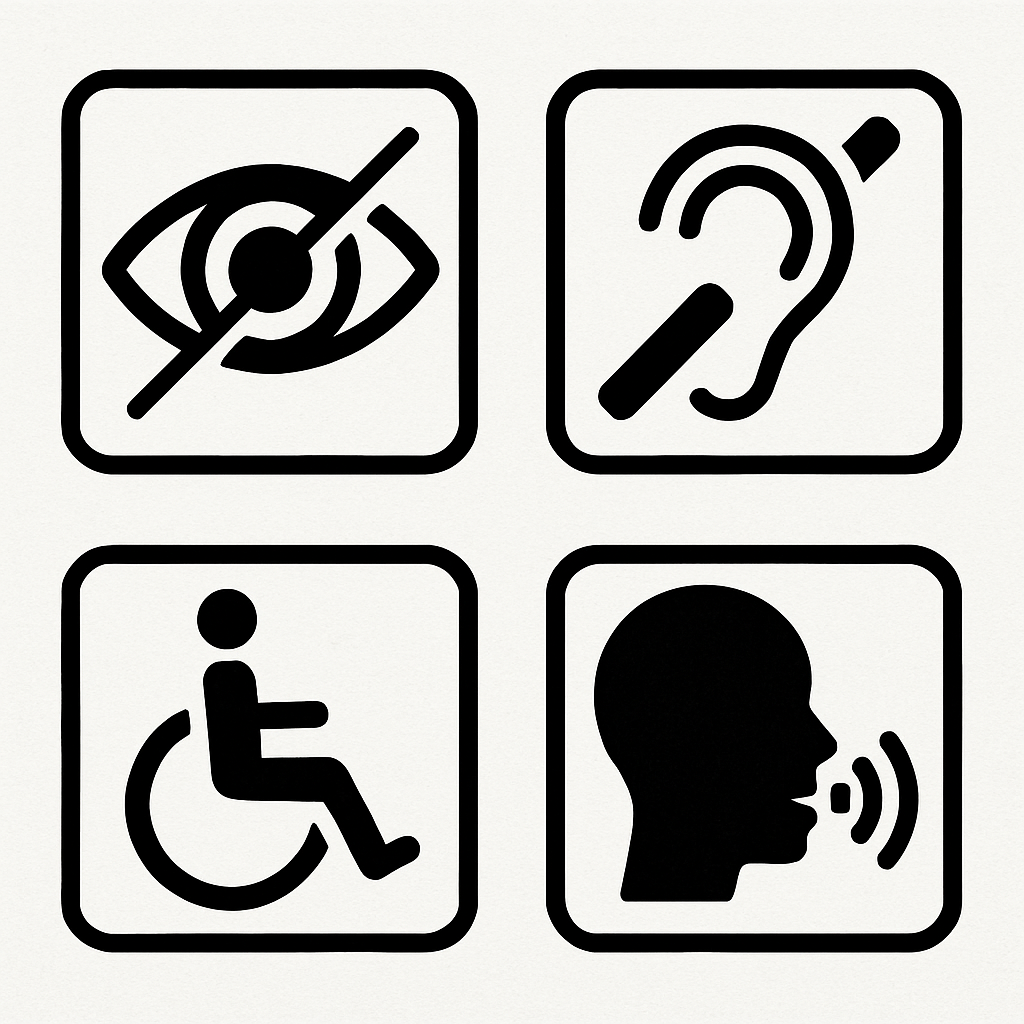In a world where communication is key, transcription services are becoming more crucial than ever. The ability to convert speech to text efficiently and accurately is transforming how businesses, educators, and individuals operate. As we look toward 2025, several trends in transcription are set to revolutionize the way we capture and utilize spoken words. Let’s dive into these emerging trends and see how they can enhance communication in various sectors.

Automated transcription is gaining traction thanks to advancements in artificial intelligence and machine learning. These technologies enable software to transcribe audio with remarkable speed and accuracy, outperforming traditional manual transcription methods. As we delve deeper into the specifics, it becomes evident that automated transcription is not just a trend but a necessity in the fast-paced world we live in.
Benefits of Automated Transcription
- Speed and Efficiency: Automated transcription can process large volumes of audio in a fraction of the time it would take a human. This speed is invaluable for businesses that need quick turnaround times for meeting notes or legal proceedings. Moreover, the rapid conversion of audio to text allows for real-time sharing and collaboration, enhancing productivity across teams. In industries like journalism, where time is of the essence, automated transcription ensures that news can be reported as it happens without delay.
- Cost-Effectiveness: By reducing the need for manual labor, automated transcription services can offer more affordable pricing models, making them accessible to a broader range of users. Companies no longer need to allocate extensive resources to hire and train transcriptionists, leading to significant cost savings. This affordability opens doors for small businesses and startups to adopt transcription services, leveling the playing field with larger corporations.
- Scalability: As businesses grow, so does their need for transcription services. Automated solutions can easily scale to meet increased demand without compromising on quality. This scalability is crucial for multinational companies that operate in various time zones and require consistent transcription services. Additionally, the ability to handle fluctuating workloads without a hitch ensures that businesses remain agile and responsive to market demands.
- Accuracy and Consistency: Automated transcription tools are equipped with advanced algorithms that enhance accuracy over time through machine learning. This continuous improvement leads to consistent results, minimizing errors that are common in manual transcription. In sectors like healthcare, where precise documentation is vital, automated transcription can significantly reduce risks associated with human error.
- Integration Capabilities: Modern automated transcription services can seamlessly integrate with other software and platforms. Whether it’s syncing with video conferencing tools or CRM systems, these integrations streamline workflows and facilitate a more cohesive digital ecosystem. This interconnectedness allows for a unified approach to data management and enhances overall operational efficiency.
Speech to Text: A Game Changer for Accessibility

One of the most significant impacts of transcription technology is its role in enhancing accessibility. Speech to text services make content more accessible to individuals with hearing impairments and those who prefer reading over listening. This inclusivity is not just a moral obligation but also a strategic advantage for organizations aiming to reach a wider audience.
How Speech to Text Enhances Accessibility
- Closed Captioning: Many video platforms now offer automatic closed captioning, making content more inclusive for viewers with disabilities. Closed captions provide a crucial link for audiences who may struggle with audio content, ensuring they can still engage fully. As regulations around accessibility tighten, adopting closed captioning becomes a compliance requirement, further driving its adoption.
- Real-Time Transcription: In educational settings, real-time transcription can help students who struggle to keep up with lectures, ensuring they have accurate notes to review later. This capability is transformative for students with learning disabilities, providing them with the tools they need to succeed academically. Beyond education, real-time transcription is also revolutionizing webinars and online conferences, making them more inclusive and interactive.
- Multilingual Support: Advanced transcription services can offer translations in multiple languages, bridging communication gaps in diverse environments. This multilingual capability is essential for global organizations that need to communicate across language barriers. It also enhances user experience for non-native speakers, allowing them to access content in their preferred language, thus broadening market reach.
- Assistive Technologies: Speech to text technologies integrate seamlessly with various assistive devices, empowering individuals with disabilities to navigate digital spaces more effectively. These integrations enhance independence and reduce barriers, fostering a more inclusive society. As technology evolves, we can expect even more sophisticated assistive solutions that further democratize access to information.
- Improved User Experience: For many users, particularly those in noisy environments or with limited internet bandwidth, reading text can be more convenient than listening to audio. Speech to text services cater to these preferences, enhancing user satisfaction and engagement. By offering flexible content consumption options, businesses can cater to a diverse audience with varying needs and preferences.
Transcription in Business: Improving Communication and Productivity
As businesses increasingly rely on remote work and virtual meetings, the demand for reliable transcription services continues to grow. Transcribing conversations and meetings can improve communication, enhance productivity, and ensure that nothing is lost in translation. This shift towards transcription is reshaping business operations and driving efficiency across sectors.
Key Business Applications
- Meeting Notes: Transcribing meetings ensures that all participants have a clear record of discussions and action items, reducing misunderstandings and improving follow-through. These transcripts serve as valuable documentation that can be referred back to, ensuring accountability and clarity. In hybrid work environments, where participants might join from different locations, transcription ensures everyone stays aligned and informed.
- Customer Service: Transcription of customer service calls can help businesses analyze interactions and improve service quality by identifying common issues and training needs. By reviewing transcribed conversations, companies can gain insights into customer sentiments and adjust their strategies accordingly. This analysis can lead to enhanced customer satisfaction and loyalty, driving long-term business success.
- Compliance and Record-Keeping: Accurate transcription is essential for maintaining records in industries subject to regulatory compliance, such as finance and healthcare. Transcripts provide an unalterable record of transactions and communications, crucial for audits and legal proceedings. With data privacy concerns on the rise, maintaining accurate and secure records through transcription is more important than ever.
- Training and Development: Transcribed materials can be utilized for employee training and development programs. They provide a rich resource for creating training manuals, onboarding materials, and performance reviews. By leveraging transcription, businesses can ensure that training content is consistent and easily accessible, fostering a knowledgeable and skilled workforce.
- Market Research: Businesses can use transcription services to analyze focus group discussions, interviews, and surveys. This analysis helps in understanding market trends, consumer preferences, and competitive landscapes. By converting spoken insights into written data, companies can conduct more detailed and actionable research, informing strategic decisions.
The Future of Voice Transcription: AI and Beyond

Looking ahead, the integration of AI in voice transcription promises even more advancements. With continuous improvements in natural language processing, AI-powered transcription services are becoming more adept at understanding context, accents, and even emotional nuances in speech. This evolution is setting the stage for a future where voice transcription is more intuitive and impactful than ever before.
Innovations on the Horizon
- Contextual Understanding: Future transcription services will be able to understand the context of conversations, leading to more accurate transcriptions that capture the intended meaning. This contextual awareness will enable transcriptions to reflect not just the words spoken but the nuances and implications behind them. As AI models become more sophisticated, they will be able to discern subtleties such as sarcasm or rhetorical questions, enhancing the richness of transcribed content.
- Emotional Analysis: By analyzing the tone and emotion in speech, transcription tools could provide additional insights, such as customer sentiment or employee morale. This emotional intelligence could revolutionize customer service, allowing businesses to tailor responses based on detected emotions. Furthermore, in mental health and therapy settings, emotional analysis through transcription could offer valuable insights into patient well-being and progress.
- Integration with Other Technologies: Transcription services are likely to integrate with other AI tools, such as virtual assistants, to provide seamless and comprehensive communication solutions. These integrations will create an ecosystem where transcription serves as a foundational component of broader AI-driven interactions. For example, voice-activated systems could utilize transcription to enhance user interactions, creating more personalized and efficient experiences.
- Voice Biometrics: The future may see the incorporation of voice biometrics into transcription services, adding an extra layer of security and personalization. This technology could authenticate users based on voice patterns, providing secure access to sensitive information. As cybersecurity becomes increasingly critical, voice biometrics in transcription could play a pivotal role in safeguarding data.
- Augmented Reality (AR) and Virtual Reality (VR): Transcription could also find applications in AR and VR environments, enhancing immersive experiences through real-time text overlays. In training simulations or virtual meetings, transcription could provide participants with contextual information and guidance, enriching the overall experience. As AR and VR technologies continue to advance, the role of transcription in these spaces is poised to grow.
Dialogue Transcription in Media and Entertainment
In the media and entertainment industry, transcription plays a pivotal role in content creation and distribution. From scriptwriting to post-production, accurate transcription can streamline processes and enhance the final product. This sector, driven by creativity and innovation, relies heavily on transcription to bring ideas to life and reach global audiences.
Applications in Media
- Script Development: Transcribing dialogue from brainstorming sessions can help writers capture spontaneous ideas and turn them into polished scripts. These transcripts serve as a written record that can be revisited and refined, ensuring that creative sparks are not lost. In collaborative writing environments, transcription facilitates communication and idea sharing, leading to richer and more dynamic storytelling.
- Subtitling and Dubbing: Accurate transcription is essential for creating subtitles and dubbing tracks, ensuring that international audiences can enjoy content in their native languages. This process involves not only translating words but also adapting cultural nuances to resonate with diverse viewers. By ensuring high-quality transcription, media companies can expand their reach and impact, connecting with audiences worldwide.
- Content Searchability: By transcribing audio content, media companies can make their libraries more searchable, increasing discoverability and audience engagement. Transcribed content allows for efficient indexing and retrieval, enabling users to find specific clips or episodes quickly. This enhanced searchability can lead to higher viewer retention and satisfaction, as audiences can easily access content that interests them.
- Post-Production Efficiency: During the post-production phase, transcription aids in organizing and editing audio and video materials. Editors can use transcribed scripts to align audio with visuals, ensuring a seamless final product. This efficiency reduces post-production time and costs, allowing media projects to be completed on schedule and within budget.
- Interactive Content: Transcription technology is paving the way for interactive media experiences, where viewers can engage with content in new ways. By integrating transcribed dialogue with interactive elements, media creators can offer audiences a more immersive and participatory experience. This innovation is opening up new possibilities for storytelling and audience engagement in the digital age.
Conclusion: Embracing Transcription Trends for Enhanced Communication
As we move towards 2025, the transcription landscape is set to evolve dramatically. From automated solutions that offer speed and cost savings to AI-driven tools that enhance accuracy and provide deeper insights, transcription services are poised to transform communication across industries. Embracing these trends will be crucial for businesses, educators, and individuals looking to stay ahead in an increasingly digital world.
By leveraging advanced transcription technologies, we can ensure that communication remains clear, accessible, and effective, regardless of the medium. The future of transcription is bright, with innovations that promise to enhance communication and make our lives easier. Whether you’re a business owner, educator, or media professional, understanding and adopting these trends will be key to success in the coming years.
In conclusion, the advancements in transcription technology are not just about keeping up with the times but about setting new standards for communication excellence. By integrating these trends into our daily operations, we can create a more connected, inclusive, and efficient world. As we continue to innovate and adapt, the potential of transcription to revolutionize communication is limitless, promising a future where everyone can speak and be heard with clarity and understanding.


